Create a new console app project in VS.NET 2010. Now add reference to the dll's
a. System.ServiceModel
b. System.ServiceModel.Web
c. System.Runtime.Serialization
The Program.cs Main method has the following code
public class Program
{
public static void Main(string[] args)
{
Uri baseAddress = new Uri("https://"+Environment.MachineName+":54321/hello");
using (ServiceHost host = new ServiceHost(typeof(HelloWorldService), baseAddress))
{
WebHttpBinding web = new WebHttpBinding();
web.Security.Mode = WebHttpSecurityMode.Transport;
host.AddServiceEndpoint(typeof(IHelloWorldService), web, "").Behaviors.Add(new WebHttpBehavior());
host.Credentials.ServiceCertificate.Certificate = (X509Certificate2)GetX509Certificate();
host.Open();
Console.WriteLine("The service is ready at {0}", baseAddress);
Console.WriteLine("Press <Enter> to stop the service.");
Console.ReadLine();
host.Close();
}
}
private static X509Certificate GetX509Certificate()
{
X509Store store = new X509Store(StoreName.My, StoreLocation.LocalMachine);
store.Open(OpenFlags.OpenExistingOnly);
X509Certificate certificate = null;
X509Certificate2Collection cers = store.Certificates.Find(X509FindType.FindBySubjectName, "localhost", false);
if (cers.Count > 0)
{
certificate = cers[0];
}
store.Close();
return certificate;
}
}
[ServiceContract]
public interface IHelloWorldService
{
[WebGet(UriTemplate="SayHello/{name}")]
string SayHello(string name);
}
public class HelloWorldService : IHelloWorldService
{
public string SayHello(string name)
{
return string.Format("Hello, {0}", name);
}
}
Now we create certificate by creating a batch file of the below commands (taken from MSDN) and executing it from VS.NET command prompt:
echo off
setlocal
call :setscriptvariables %1
IF NOT DEFINED SUPPORTED_MODE call :displayusage
IF DEFINED SUPPORTED_MODE call :cleancerts
IF DEFINED SETUP_SERVICE call :setupservice
IF DEFINED SETUP_CLIENT call :setupclient
GOTO end
:cleancerts
REM cleans up certs from previous runs.
certmgr.exe -del -r CurrentUser -s My -c -n %CLIENT_NAME%
certmgr.exe -del -r CurrentUser -s TrustedPeople -c -n localhost
certmgr.exe -del -r LocalMachine -s My -c -n localhost
certmgr.exe -del -r LocalMachine -s TrustedPeople -c -n %CLIENT_NAME%
certmgr.exe -put -r LocalMachine -s My -c -n %COMPUTER_NAME% computer.cer
IF %ERRORLEVEL% EQU 0 (
DEL computer.cer
pause
certmgr.exe -del -r LocalMachine -s My -c -n %COMPUTER_NAME%
)
:cleanupcompleted
GOTO :EOF
:setupclient
makecert.exe -sr CurrentUser -ss MY -a sha1 -n CN=%CLIENT_NAME% -sky exchange -pe
IF DEFINED EXPORT_CLIENT (
certmgr.exe -put -r CurrentUser -s My -c -n %CLIENT_NAME% client.cer
) ELSE (
certmgr.exe -add -r CurrentUser -s My -c -n %CLIENT_NAME% -r LocalMachine -s TrustedPeople
)
GOTO :EOF
:setupservice
makecert.exe -sr LocalMachine -ss MY -a sha1 -n CN=%SERVER_NAME% -sky exchange -pe
IF DEFINED EXPORT_SERVICE (
certmgr.exe -put -r LocalMachine -s My -c -n %SERVER_NAME% service.cer
) ELSE (
certmgr.exe -add -r LocalMachine -s My -c -n %SERVER_NAME% -r CurrentUser -s TrustedPeople
)
GOTO :EOF
:setscriptvariables
REM Parses the input to determine if we are setting this up for a single machine, client, or server
REM sets the appropriate name variables
call :setcomputername
IF [%1]==[] CALL :singlemachine
IF [%1]==[service] CALL :service
IF [%1]==[client] CALL :client
set CLIENT_NAME=client.com
GOTO :EOF
:singlemachine
SET SUPPORTED_MODE=1
SET SETUP_CLIENT=1
SET SETUP_SERVICE=1
SET SERVER_NAME=localhost
GOTO :EOF
:service
SET SUPPORTED_MODE=1
SET SETUP_SERVICE=1
SET EXPORT_SERVICE=1
SET SERVER_NAME=%COMPUTER_NAME%
GOTO :EOF
:client
SET SUPPORTED_MODE=1
SET SETUP_CLIENT=1
SET EXPORT_CLIENT=1
GOTO :EOF
:setcomputername
REM Puts the Fully Qualified Name of the Computer into a variable named COMPUTER_NAME
for /F "delims=" %%i in ('cscript /nologo GetComputerName.vbs') do set COMPUTER_NAME=%%i
GOTO :EOF
:displayusage
ECHO Correct usage:
ECHO Single Machine - Setup.bat
ECHO Client Machine - Setup.bat client
ECHO Service Machine - Setup.bat service
:end
Now open Microsoft Management Console and Select File --> Add/Remove Snap-in to add the Certificates - Current User and Certificate - Local Machine stores
Navigate to Certificate - Local Machine Personal Store to find a server certificate called localhost (self signed) created and installed.
Now Open your IIS and right click on the default website to add HTTPS binding to it with your port number matching that you have defined in your console app (for my its 54321) and select the certificate to be "localhost" ( the certificate that was created in the above steps) and click "OK" and "Close"

Now start your Console app to have your service running and now open fiddler and perform a GET request as shown:
GET https://rajeshwin7:54321/hello/sayhello/rajesh HTTP/1.1
User-Agent: Fiddler
Host: rajeshwin7:54321
Now you get back a response as below:
HTTP/1.1 200 OK
Content-Length: 90
Content-Type: application/xml; charset=utf-8
Server: Microsoft-HTTPAPI/2.0
Date: Fri, 04 May 2012 14:51:25 GMT
<string xmlns="http://schemas.microsoft.com/2003/10/Serialization/">Hello, rajesh</string>
When no IIS is present open up command prompt and enter the following at the command prompt to do a http port mapping for ssl certificate using the netsh tool in winvista and above OS and httpcfg for winxp.
C:\> netsh http add sslcert ipport=0.0.0.0:54321 certhash=6797aea29440de9389bc636e15a35b741d8c22a3 appid={2e80948d-9ae6-42c9-ad33-294929333965}
certhash -- Thumbprint id of the certificate created above. The thumbprint id can be obtained by opening up the Microsoft Management Console - Add/remove snap in for certificate store of computer account on local machine and then navigate to personal store to find the certificate (assuming it has been installed as given above) and then double click on the certificate and navigate to the details tab to find the thumbprint id as one of the properties(just copy it to use in the above netsh command by removing the spaces)
appid -- is the guid associated with your application that can be found in your assembly.cs file in your project properties folder as shown below:

Now to clean up the certificate create a bathc file with the below commands and execute it using Vs.NET command prompt:
echo off
setlocal
set CLIENT_NAME=client.com
call :setcomputername
call :cleancerts
DEL client.cer > NUL 2>&1
DEL service.cer > NUL 2>&1
GOTO end
:cleancerts
REM cleans up certs from previous runs.
certmgr.exe -del -r CurrentUser -s My -c -n %CLIENT_NAME%
certmgr.exe -del -r CurrentUser -s TrustedPeople -c -n localhost
certmgr.exe -del -r LocalMachine -s My -c -n localhost
certmgr.exe -del -r LocalMachine -s TrustedPeople -c -n %CLIENT_NAME%
certmgr.exe -put -r LocalMachine -s My -c -n %COMPUTER_NAME% computer.cer
IF %ERRORLEVEL% EQU 0 (
DEL computer.cer
pause
certmgr.exe -del -r LocalMachine -s My -c -n %COMPUTER_NAME%
)
:cleanupcompleted
GOTO :EOF
:setcomputername
REM Puts the Fully Qualified Name of the Computer into a variable named COMPUTER_NAME
for /F "delims=" %%i in ('cscript /nologo GetComputerName.vbs') do set COMPUTER_NAME=%%i
GOTO :EOF
:end
You can remove the ssl certificate mapping to a port using netsh command as below:
c:\> netsh http delete sslcert ipport:0.0.0.0:54321

